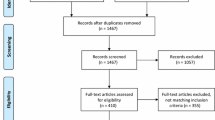Abstract
This prospective study was conducted at a tertiary care teaching hospital in South India over a period of 7 years and included 90 patients with incisional hernia (n = 90; 76 females and 14 males), operated over 2 years (January 2004 to December 2005), and followed-up for 5 years postoperatively (2005–2009). As per the surgical unit preference, patients underwent different methods of hernia repair—onlay mesh repair (n = 45, 50 %), underlay mesh repair (n = 18, 20 %), and anatomical repair (i.e., without mesh) (n = 27, 30 %). Parameters studied included seroma formation, wound infection, postoperative pain, and hernia recurrence. Although the first two parameters were statistically not significant, postoperative pain was found to be more in patients who underwent an underlay repair. A significant difference in the hernia recurrence rate was observed between mesh repair and anatomical repair groups. Hence, we conclude that all incisional hernias should be repaired with a mesh (meshplasty).
Similar content being viewed by others
References
Kuzbari R, Worseg AP, Tairych G, Deutinger M, Kuderna C, Metz V et al (1998) Sliding door technique for the repair of midline incisional hernias. Plast Reconstr Surg 101:1235–1242
Machairas A, Misiakos EP, Liakakos T, Karatzas G (2004) Incisional hernioplasty with extraperitoneal onlay polyester mesh. Am Surg 70(8):726–729
San Pio JR, Damsgaard TE, Momsen D, Villadsen I, Larsen J (2003) Repair of giant incisional hernias with polypropylene mesh: a retrospective study. Scand J Plast Reconstr Surg Hand Surg 37:102–106
Martin-Duce A, Noguerales F, Villeta R, Hernandez P, Lazono O, Keller J et al (2001) Modifications to Rives technique for midline incisional hernia repair. Hernia 5:70–72
Paajanen H, Hermunen H (2004) Long term pain and recurrence after repair of incisional hernias by open mesh: a clinical and MRI study. Langenbecks Arch Surg 389:366–370
Luijendijk RW, Hop WC, Van Den Tol MP, De Lange DC, Braaksma MM, Ijermans JN et al (2000) A comparison of suture repair with mesh repair of incisional hernia. N Engl J Med 343:392–398
Hameed F, Ahmed B, Ahmed A, Dab RH, Dilawaiz M (2009) Incisional hernia repair by preperitoneal (Sublay) mesh implantation. APMC 3:27–31
Conflicts of interest
Nil
Source of funding
Nil
Author information
Authors and Affiliations
Corresponding author
Rights and permissions
About this article
Cite this article
Kumar, V., Rodrigues, G., Ravi, C. et al. A Comparative Analysis on Various Techniques of Incisional Hernia Repair–Experience from a Tertiary Care Teaching Hospital in South India. Indian J Surg 75, 271–273 (2013). https://doi.org/10.1007/s12262-012-0644-z
Received:
Accepted:
Published:
Issue Date:
DOI: https://doi.org/10.1007/s12262-012-0644-z




